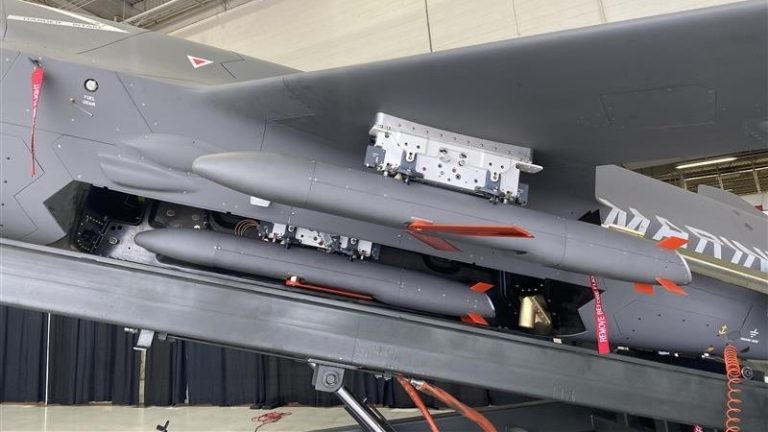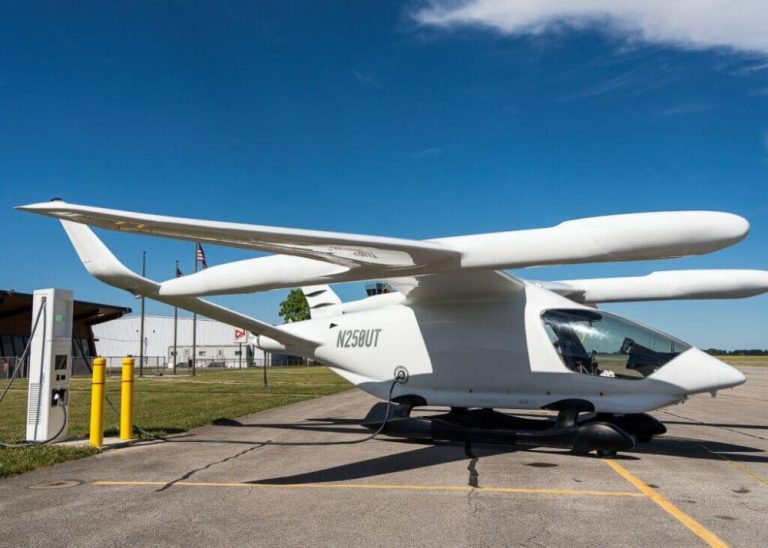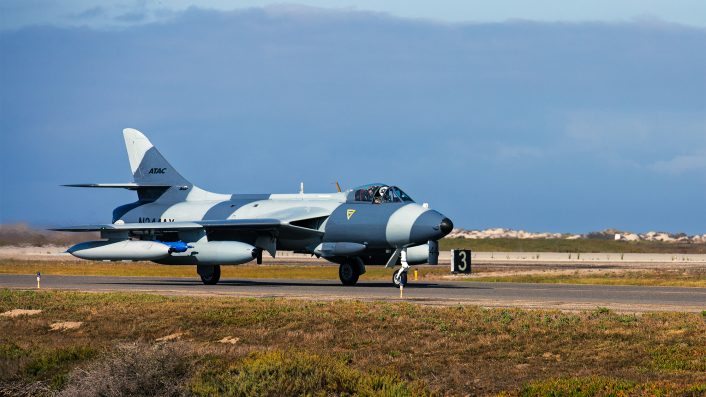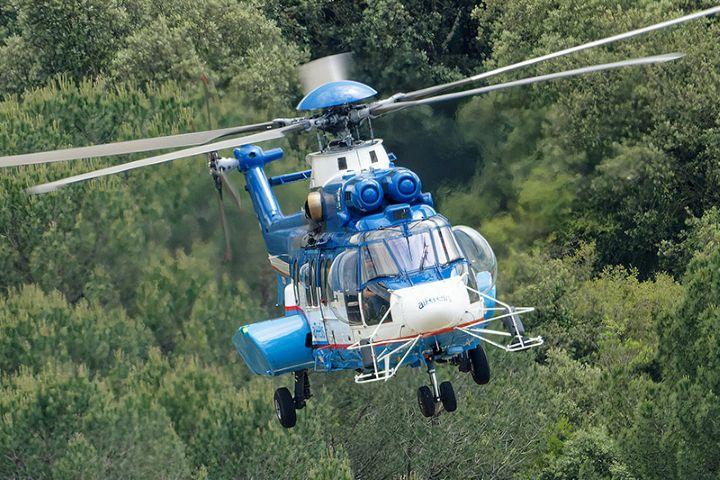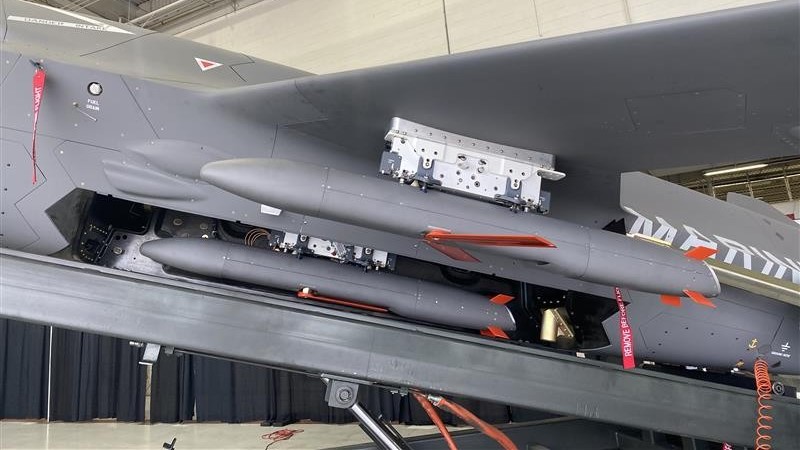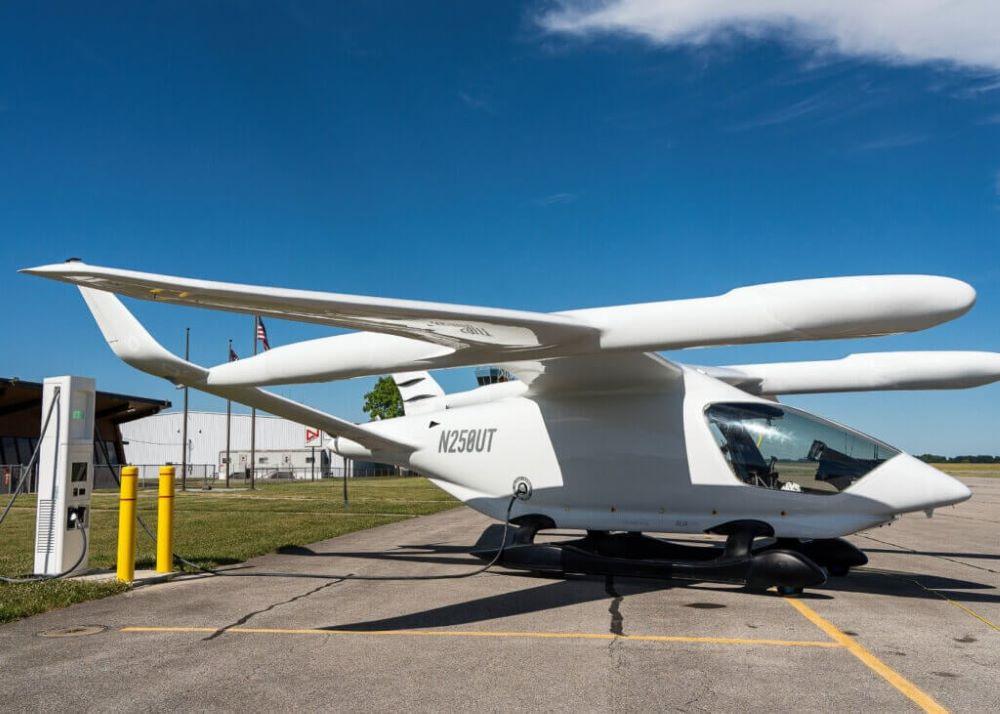High winds in Las Vegas during NBAA-BACE shut the static display on Tuesday, but a plethora of news—including from aircraft and engine OEMs, new operators such as Bond, and connectivity options—impressed attendees’ attention as well.
Subscribe Now
Don’t miss a single episode. Subscribe to Aviation Week’s BCA Podcast in Apple Podcasts, Spotify or wherever you get podcasts.
Discover all of our podcasts at aviationweek.com/podcasts.
AI-Generated Transcript
Jeremy Kariuki (00:10): Hello and welcome to the BCA podcast from Aviation Week Network. I’m your host, Jeremy Kariuki, and I’m joined by my colleagues Lee Ann Shay, Molly McMillin, Bill Carey, and Guy Norris live from NBAA-BACE 2025 in Las Vegas, Nevada. How’s everybody doing?
Molly McMillin: Good.
Bill Carey (00:26): Still here, still here.
Jeremy Kariuki (00:29): No, it’s only Tuesday night, but there’s a lot that’s already been announced at the show, so let’s just get right into it. What’s the biggest stuff that we’ve heard so far? So Guy, what have you heard so far?
Guy Norris (00:41): Yeah, well thanks Jeremy. I mean, actually, and thanks to you being there in real life, we actually got a decent recording and despite the fact that the wind whipped through Henderson Executive Airport and basically decimated the static display this afternoon, but anyway, more of that in a minute. But yeah, it was very exciting. Actually it was in June, Bombardier announced that this massive order for Globals and Challengers up to 120 aircraft potentially worth around $4 billion if everything’s exercised, was placed by a mystery buyer. So who was the mystery buyer? And today we found out, and it’s this new fractional operator called Bond, and it’s been set up by Bill Papariella, who’s well known in this business of course, but basically in just a matter of three months from a standing start to ordering this fleet of aircraft, he’s managed to set up this operation. And the difference is that he likes to portray this as the fractional 2.0.
(01:51): He said the market’s been established, fractional owners are out there and it’s a well run, well operated system, but he thinks there’s another level that you can get to, and that’s really what he set out to do with Bond. And somebody said to him, well, why do you call it Bond? And he said, it’s the bond between the users and the operators, and that’s what he’s going for. I was really disappointed. I thought he was going to go for James Bond, right? But never mind, you can’t have it always. But anyway, at least we found out who this mystery operator was. They’re going to start operating in 2027, which is when the first aircraft are due in just a few differences from the regular fractional that we’ve all come to know and love is that even down to the smallest aircraft, which will be the, I think the Challenger 3500, they’re going to have a dedicated flight attendant on each flight. There’s going to be only a maximum of 10 operators per aircraft. There’s sort of those sort of limits, which really mean that it really from the regular fractional. But yeah, no, I think that was a really nice chunky bit of news really for the show. Right.
Lee Ann Shay (03:10): Can I jump into that? This is Lee Ann. And the day before, Bombardier had some really interesting news, but before they started the press conference, they had Cirque du Soleil performers, which is a really lovely bit of Canada there. But the Global 8000, as Steve McCullough announced along with President or CEO Eric Martel, that the Global 8000’s max operating speed is increasing from Mach 0.94 to 0.95. So that 0.1 in a difference might seem like not so much, but Stephen had said on a typical flight from say, New York to London, that would translate to about a 7% time savings. And most people are using these type of aircraft to get to places efficiently. So 7% of time is a big deal. And also, I was really fascinated by listening to how they had to put the design back into the wind tunnel just to try all that. And then they have a Mach 0.7 margin. And so they were really testing it to Mach 1.2. And so they were saying this is really now the fastest civil aircraft that’s going to be operating.
Guy Norris (04:32): Yeah, I think that’s really interesting because to really push, as you say, to Mach 0.95, they have to do this additional margin as Lee Ann said, because you have to test at the maximum Mach MMO, which is the maximum Mach operating number. You have to test above that. And we to usually do that is in a dive. So it’s a pretty sporty test to start with. But the very fact that in normal terms, every aircraft reaches this critical moment when they approach transonic period between high subsonic and low supersonic speed, where the drag increases tremendously. So obviously Bombardier’s wing design and the way that it works with the fuselage has managed to get over that. It’s a fantastically beautifully engineered wing as we’ve all seen in the Stephen McCullough has said in several occasions. But now you really are seeing the sort of proof in the pudding, really.
Lee Ann Shay (05:31): Absolutely.
Jeremy Kariuki (05:32): And we’ve seen some other aircraft that are making some noise at the show as well, specifically from Textron. Care to talk about that, Molly?
Molly McMillin (05:40): Sure. Their Textron Aviation’s Citation Ascend is making its worldwide debut here in Las Vegas where before they’d had a mockup, but this time it actually flew in. And they’re saying that certification is expected by the end of this year. And Ron Draper, Textron Aviation president and CEO kind of put his fingers together and said, we are this close from certification, so it’s getting close. And the other thing that they did announce was that the Citation CJ3 Gen2 and the CJ M2 Gen2 both received certification, which I think probably before NBAA, but they announced it here. And then in a question to Ron Draper about whether the government shutdown is influencing having any impact on certifications or the company. And he said, no, not at this time. And I asked these folks the same question and they said, not now, but if it drags on it, it will, it’ll affect everyone in the industry.
Jeremy Kariuki (06:50): Absolutely. And also Otto had a mockup on the show floor as well, didn’t they?
Guy Norris (06:54): Yeah, that’s right, Jeremy. Well, I mean listeners will, friends of the podcast will remember that we discussed, in fact, the Otto Phantom 3500, which emerged sort of out of the blue relatively recently, but of course it was out of the blue. It showed up at NBAA here as well at the exhibit hall. And apparently this was something that was only promulgated within weeks at the meeting that was held in Bentonville, the UP is it UP Summit? Yeah. Where Ed Boland basically went up to the Phantom, the Otto folks, and said, any chance of getting that to NBAA? And that’s what they did. So anyway, that showed up. It’s huge. As we’ve walked around, Lee Ann and I were just talking about this, it’s a lot bigger in the flesh than we expected. So about a 60-foot span wingspan. I mean, it looks fairly solid.
(07:53): And the striking feature, of course, is the sort of bizarre looking fuselage. It’s quite bulbous up front. And this is all meant to, of course, promote laminar flow, which is the breakthrough technology on which it will depend. Really, the whole design is driven by this. So it’s really fascinating to see this great because it’s all plastic, it’s all fake right now, but it’s very carefully done. It looks very impressive. And yeah, they’re talking quite openly about it. Now the interesting thing with the mockup, which we weren’t able to really see any detail about before, is that one of the clever things that they’re doing with the wing is they have this slot, which is basically down towards the trailing edge. It runs the entire span all the way from the tip right to the root. And this span allows the laminar flow to cover the complete underside of the wing and about 80% of the chord of the upper side.
(09:02): And the best thing about it is that the slot divides the main wing from the ailerons and the flaps. So that within the wing itself, if you can have a very simple mechanism for actuating all of that. And in fact, there’s not a single, normally when you look under a wing, you’ll see the actuators or you’ll see these canoe fairings, none of that. It’s that clean. It’s a very slippery beast. So it’s impressive in every respect. So it wasn’t nice to see that something new on the exhibit hall, which is like, wow, that looks cool.
Jeremy Kariuki (09:36): Yeah, definitely a head turner. For sure. For sure. And in terms of aircraft less, we forget Gulfstream and the G400, what do we know about that so far?
Bill Carey (09:45): Well, the Gulfstream did have a press conference, and the Monday, the press day where they recapped an announcement they made a week prior to on the launch of the G300, which is the successor aircraft to the G280, which is manufactured with Israel Aerospace Industries in Israel. We did pose the question as to what is the status of the G400, which is their 4,000 nautical mile range jet, part of the new generation of jets that they’ve introduced over the last decade. There had been indications that it would be certified by the end of this year. Gulfstream did not have news on that. And actually they’re deferring any announcements on expected entry into service or certification dates to their parent company, General Dynamics. What they did speak a lot about, and what I had an opportunity to experience down in Savannah the week before NBAA was really the expansion of their customer support network. They did announce at NBAA, the opening of a new MRO facility in the Dallas-Fort Worth area. They’ve recently expanded their facilities in Mesa, Arizona. The airport there is Mesa Gateway Airport, I think it’s called, but Gulfstream over the last 10 years has invested $600 million in their customer support operation. And so that’s a big piece of their business, and they had a lot to say about that at NBAA.
Jeremy Kariuki (11:37): And of course, this is a recurring topic in Molly. I mentioned it earlier, the government shutdown. We heard from somebody from the ATC talking about it. What did they have to say about it?
Bill Carey (11:48): Yeah, just to add to Molly’s reporting on Monday, the press day prior to the actual official opening of NBAA for all of the attendees, the president of the National Air Traffic Controllers Association, Nick Daniels gave a really impassioned speech calling for an immediate end to the government shutdown that started on October 1st as we speak today. Today is Tuesday. The controller workforce in the United States will receive their first partial paycheck because it’s a two-week cycle and they won’t receive the full pay. And as of October 28th, I received nothing for working six-day weeks. What Nick Daniels kind of warned about is that they’re not going to have their attention on the job of separating aircraft. They’re going to be thinking about deferring their mortgages and feeding their families. I thought a pretty remarkable and very impassioned speech calling for the end of the government shutdown, which thus far as we sit here today, shows no signs of coming to a conclusion.
(13:01): Prior to Nick Daniels speaking, the Sam Graves, a Republican congressman from Missouri, the chairman of the House Transportation Committee, spoke to the promised brand new air traffic control system that Transportation Secretary Sean Duffy has unveiled this spring. There was $12.5 billion approved for that transformation of the air traffic control system approved in the so-called one big beautiful bill that our president signed on July 4th. Graves said that in Congress, they’re working in a bipartisan fashion on the House side where the House aviation subcommittee has always made a big effort to be collaborative between Democrats and Republicans. They feel that they can, with the $12.5 billion, they can cover much of the telecommunications radar and surface surveillance improvements that are needed to fix our air traffic control system. However, and it’s a big, however, he said it’s estimated they’ll need another $19 billion to complete the transformation, including bringing on board the necessary complement of air traffic controllers and having them certified as professional controllers. Actually today in the opening remarks, NBAA president Ed Bolan said that the air traffic control modernization is a big push for the business aviation community. They’re fully on board with it, and so it remains to be seen if this can be accomplished.
Jeremy Kariuki (14:46): Yeah, it’s a big task. So other than that, we’ve had some news on some new operators coming around, specifically Fetch and Magnificent Air. Lee Ann, could you speak more to that?
Lee Ann Shay (14:57): Sure. Today, Magnificent Air had a press conference and announced their intent to start operating in 2027, largely with an all-Airbus fleet, mostly A220s. They’re calling it a private class. So a very luxurious Part 121 scheduled service from markets such as New York, Miami, Los Angeles, and the president of the company said that he anticipated that a seat would be about the cost of twice as much as a first-class airline ticket. So more than flying on a scheduled airline, but less than a typical fractional or charter and Fetch a startup that I talked to this morning, three founders out of California are going to be operating PC-12s. They are refurbishing six of them with a new propeller, new interiors connectivity. And they just bought a charter company in Florida and they just got that disclosed today. So they now officially, they got their operating certificate and they’ll be doing business as Fetch. And then there was also Kenny Dichter is another name that like Bill that you had mentioned earlier, Kenny Dichter, who Molly’s reported on extensively, who started real, Ken Dichter founded
Molly McMillin (16:28): Wheels Up, and then he also founded the Marquis Jet card, which ultimately sold to NetJets.
Lee Ann Shay (16:36): And so Reel, they officially launched in August,
Molly McMillin (16:40): And they are a boutique private brokerage firm. So they won’t own assets, but they will manage the flights and have partnerships with others who do.
Guy Norris (16:51): And Lee Ann didn’t you say that Fetch had something to do with dogs or something?
Lee Ann Shay (16:56): Yes. So they had done a lot of humanitarian flights, rescue dogs, dogs that were helping with search, rescue, everything. And because of their background, then they realized that there was something there and they pooled their expertise and now are going to be a for-profit, but they still actively do a lot of humanitarian and dog rescue.
Guy Norris (17:19): So it’s true then this industry is going to the dogs.
Lee Ann Shay (17:22): Yes.
Guy Norris (17:23): Sorry, sorry.
Lee Ann Shay (17:25): And they can use fetching in you.
Molly McMillin (17:27): So yes, they seemed like they had a lot of energy when they came in. They were very enthused about what they were doing. Yeah.
Jeremy Kariuki (17:33): Awesome. And Guy, you reported on some engine activity as well, didn’t you?
Guy Norris (17:38): I did. Yeah. Well, we can’t keep engines out. The whole industry relies on engines. Without ’em, you’re not going anywhere. But I mean, just a couple of highlights really. One which really almost touched on with Lee Ann’s discussion about Bombardier and the higher speed. GE of course developed the GE Passport engine for the high-end Bombardier fleet. And with the certification of course of the 8000, they happened to be about deliver the 500th Passport engine, which will be the first production engine post certification for the Global 8000. And one of the clever things about that, of course, is that engine has been modified through software, through a FADEC change to be enabled it to be now powering the fastest subsonic aircraft commercially since Concorde. So that’s a pretty cool achievement. Another one’s just obviously Pratt and Whitney are not very far behind in terms of their numbers.
(18:39): In fact, in advance of that, in numbers with the Pratt and Whitney PW800, which is based on the core of the Geared Turbofan, of course, they’re racking up huge amounts of numbers now, 600,000 flight hours on the G500 and 600 fleet and the Falcon 6X and Rolls-Royce, of course, which redoubled its efforts to get back into the big jet business, the heavy metal market with the Global 5500, 6500 with the Pearl 15, Pearl 700 of course on the G700 and G800. And of course the Pearl 10X, which is in the final stages of about to power the Dassault 10X on its maiden flight. But we don’t know much about that because they ain’t here. So that’s as much as we can say right now. But suffice to say 700-plus engines now in service across the Pearl family. So yeah, they’re all doing very well in the big end of the market.
Jeremy Kariuki (19:42): Awesome. Bill, what’s the latest on connectivity? I know there’s a couple people here.
Bill Carey (19:47): Oh yeah. There’s a lot happening in the connectivity segment of the market. Viasat is one of the legacy providers of satellite communications is introducing their Jet XP service. And what that does is for the first time it integrates the legacy Viasat and Inmarsat networks into one offering. And that’s based on the Viasat acquisition of Inmarsat within the last year, 18 months or so. And bringing together two very different cultures for this offering. And also Viasat is they’re introducing what they’re calling an in-flight quality experience metric IQE. And what they’re really doing here at NBAA is making the case that download speed alone does not define the inflight experience that there’s other factors involved. They actually had a study that they released that was conducted by an MIT professor looking at the various factors that weigh into the user’s experience in flight. I’m as guilty of this as anybody.
(21:07): A lot of journalists have always kind of gone with what’s the fastest download speeds. And you have Starlink saying you can get 200 megabits per second. But what some of the legacy providers are saying now is that there’s other factors that contribute to the inflight experience. Honeywell is promoting JetWave X, which is the new generation of their tail-mounted broadband satcom terminal for a mid-size to larger jets, Honeywell and Viasat. Our partners, Viasat builds its own terminal to connect to its satellite constellation, Ka-band satellite constellation, and Honeywell also as a partner of Viasat with their own hardware connects to the Viasat network. Gogo, and I’m speaking with them tomorrow, are on the cusp of having their new Galileo satellite broadband service enter service, and that’s a low Earth orbit-based satellite network. They’re going to use capacity from the OneWeb satellite network to provide a service that for the first time is a head-to-head competition with SpaceX, Starlink’s low Earth orbit broadband service, which has really taken off in the past couple of years.
(22:34): So there’s a lot coming to the fore now. And just before NBAA company I had not previously heard of called Abella announced that they have bought the assets of the former SmartSky Networks air-to-ground system in the United States. And they’re reintroducing that because SmartSky Networks last August just summarily ceased operations due to their inability to raise finance. And they had been developing a air-to-ground cellular network over the course of 10 years and then they went belly up. But this other company, Abella is bringing that back. I was by their exhibit today, they’re using the same SmartSky Networks, a chipset of belly-mounted antenna and base radio, and they use a third-party modem system to make that work. And that too brings back a competition to Gogo, which is expected to also soon enter into service with a brand new 5G air-to-ground service that covers the entire United States. So there’s just a lot happening on that side of the industry and the competition is mounting, and there’s a lot of choices now for operators determine under what their needs are, what their mission profile is, what their passengers expect in terms of in-flight connectivity.
Jeremy Kariuki (24:04): Awesome. Yeah. Well, I can’t wait to see what comes from that, but before we wrap up, let’s end on a pretty fun note. We went to Textron yesterday and they talked about the Special Olympics airlift. Lee Ann, could you tell us more about that?
Lee Ann Shay (24:18): Absolutely. Ron Draper said that this is going to be the ninth airlift in which Textron has been participating and they’re really rallying the Citation and other operators to help transport all of the Special Olympics athletes. And Molly, didn’t you say that this is the biggest peacetime airlift in the world?
Molly McMillin (24:42): Yes, it’s the biggest peacetime airlift ever. And he is asking Citation owners and operators to donate their pilots and airplanes and fuel and fly the athletes and their coaches to the game and fly them in. And they’re thrilled It’s held every two years. And two years ago, I went out to Textron Aviation in Wichita when they did the launch. It was just so much fun. Just the joy on those athletes’ faces, some of them, it’s their first time they’ve been in an airplane and it is just a really wonderful way to give back. I think it’s June 19th
Lee Ann Shay (25:22): Through the 26th in Minneapolis, so next June.
Jeremy Kariuki (25:26): Yeah. And there’s a certain NFL legend returning to help out, isn’t there?
Lee Ann Shay (25:30): Yes, that would be a Mr. Peyton Manning.
Jeremy Kariuki (25:32): All right. Yeah. And they showed some footage of that and that was a really, really sweet message that they sent. But yeah, they’re really excited to see ’em.
Molly McMillin (25:40): Absolutely. And may I just do one quick thing where business aviation started, the show actually circles back to that, a group who is restoring a Learjet 23-003. It was the first Learjet ever to be delivered. There’s a group of people raising money and they’re volunteering their time and their expertise to restore the plane to flying condition. And they’re here at the Spectre Jet booth trying to raise awareness and money to and enthusiasm for the project. Clay Lacy, the legendary Clay Lacy, was at the exhibit today in support of the project. And it’ll take a little bit, they need some more money and they need time to do it, but it’s a group of current Bombardier and retired Learjet employees who have done this as a mission of love. The other thing added static display is a Learjet 23, and that one is currently the only Learjet that’s in flyable condition. And as they will tell you, the Learjet is the plane that launched business aviation. When Bill Lear decided to build the Learjet, no one else wanted to do it. And he said, if you won’t do it, I will. And the Learjet became synonymous like Kleenex is to tissue where people would look up at the sky and see a plane flying and they’d go, there goes a Learjet. Now, it may or may not have been a Learjet, but it really became a household name and thus launched this whole industry, so to speak.
Lee Ann Shay (27:11): That is so cool. And I know we’ve got to wrap up, but we talk a lot about technology as we did most of the podcast, but there are so many good people stories, whether it be Special Olympics, and to your point, Clay Lacy, a big shout-out to James Genta Sr. who today became the Charles Taylor mechanic. For those of you who are not aware of it, that is a very prestigious award given to someone who has worked as a maintenance and A&P technician for at least 50 years. And so that’s quite a feat. And they’ve got Corporate Angel Network Gala on Wednesday. So there are just a lot of people-driven things in this industry happening too.
Jeremy Kariuki (27:54): Right. Well, that’s all the time we have tonight. Lee Ann, Molly, Guy, Bill, thank you guys so much. It’s always a pleasure to actually get to work with you guys in person.
Lee Ann Shay (28:04): Thank you, Jeremy.
Jeremy Kariuki (28:05): Same one. Likewise. Yeah. And thank you for listening to this podcast. If you liked it, wherever you’re listening, please remember to like, subscribe, or leave us a review. That’s all we have for today. We will see you again.


